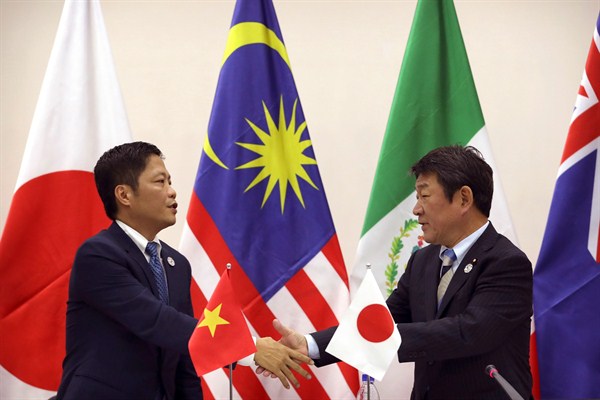On the sidelines of the leaders’ summit for the Asia-Pacific Economic Cooperation forum, or APEC, earlier this month in Vietnam, the remaining members of the Trans-Pacific Partnership—the mega-regional free trade pact that includes Japan, Canada, Mexico, Australia, New Zealand, Chile, Peru, Malaysia, Vietnam, Singapore and Brunei—agreed on most elements of a deal to salvage it in the form of a new, so-called TPP-11. In late January, in one of the first moves after taking office as U.S. president, Donald Trump followed through on his campaign promise to withdraw the United States from what had been Barack Obama’s signature economic achievement in Asia.
The agreement reached in Vietnam has, in the usual parlance of international trade, been dubbed the Comprehensive and Progressive Agreement for the Trans-Pacific Partnership, or CPTPP, and still needs to be signed and then ratified by member states before it enters into force. Essentially, the CPTPP closely follows the text of the original TPP, which was shaped significantly by U.S. input and interests. The new deal remains a highly ambitious multilateral trade agreement that sets out robust standards for regional trade in areas such as e-commerce, market access and labor market conditions. There are a few notable variations from the original TPP, most of which center on the protection of intellectual property rights, which had been pushed strongly by the U.S. during the initial TPP negotiations.
The deal’s remaining members agreed to shelve some of these key articles on intellectual property. They also agreed on new language written into the CPTPP text to allow the trade deal to go forward without the U.S. and to outline the conditions for new members to potentially accede to the treaty in the future. Despite the failure to sign the agreement at the APEC summit, largely as a result of Canada’s positions on cultural exemptions, the agreement on the core elements of the CPTPP is a significant step forward. Indeed, it is an achievement considering that less than a year ago, TPP members were in disarray after Trump’s decision to withdraw from the agreement capped growing protectionist sentiments across the globe.

